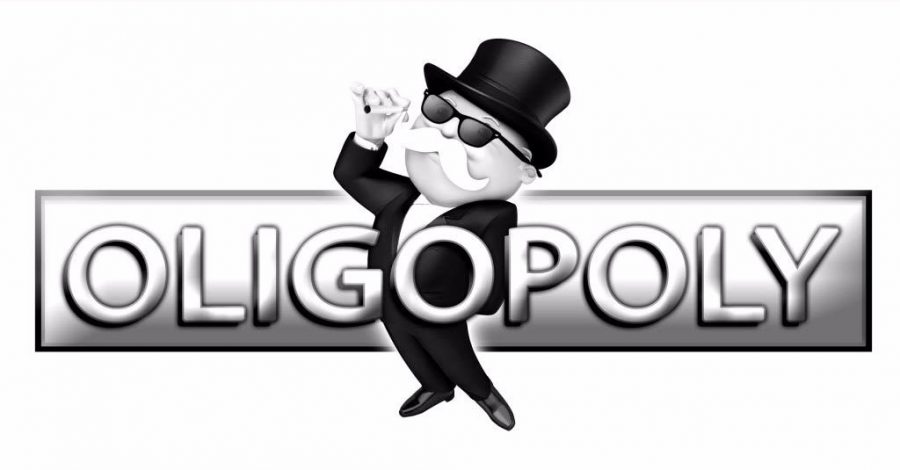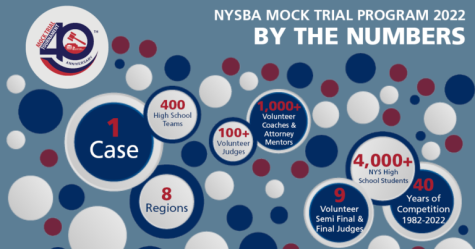The Oligopoly Problem
September 17, 2018
Everybody knows that monopolies, where one company controls an industry, are illegal, but there’s a loophole to this: oligopolies, in which several select companies control that industry, are totally fine. As such, several economic areas today have come to be dominated by a few elite companies, with no chance of newcomers edging into the business. This stifles economic activity, rips off the consumer (as these big corporations often set higher prices in concert), and discourages the development of small businesses. However, a large portion of the American people is woefully unaware of these continuing travesties. This article will attempt to shed some light on the issue by exposing and explaining the major oligopolies.
Airline- In the United States, only four airlines (American Air, Delta, Southwest, and United) fly about 80% of domestic flights, sometimes providing the only flights in crucial links between cities. These corporations have been steadily upping the airfares while cramming more people into the cabins and offering lesser services, all in the name of making money. What’s so much worse about it all is the fact that this is an extremely difficult industry to break into, because it requires a lot of money up front.
Automobile- If you think about it, there aren’t as many options as you think. 85% of the US market is dominated by GM, Ford, Chrysler, Toyota, Honda, Nissan, and Hyundai/Kia. The other names you know are either owned by these companies or charge similar prices out of necessity for survival. This keeps car prices around 10% higher than they could be.
Banking- Everybody’s heard complaints about the Big Four banks (those being JP Morgan Chase, Bank of America, Citigroup, and Wells Fargo), collectively holding more than $8 trillion. A lot of this happened during the recession, when the economy was weak and the government allowed it, but there has been no increased regulation since due to heavy lobbying. Charters for new banks in recent years have essentially dropped to zero.
Cable/Internet Providers- About 97 million households are paying for cable in 2018, and 77 million of those are using either Comcast, AT&T, Dish, or Charter Communications. This particular oligopoly was recently exacerbated when the US government allowed AT&T to merge with Time Warner this past June. Again, prices are driven up, and with net neutrality up in the air, this is liable to only get worse.
Eyewear- This one is actually closest to a modern monopoly, and the government has done nothing. One Italian company, Luxottica, is responsible for 80% of the eyeglass brands in the United States. If you’ve worn Pearle Vision, Versace, Sunglass Hut, Target Vision, Rayban, Coach, Prada, or countless other types of eyeglass brands, you’ve worn Luxottica. The company is able to charge four or five times what it costs to manufacture, and any smaller company that tries to charge less either gets squished out of existence or acquired.
Health Insurance- In about half of the states, 70% or more of healthcare is offered by only two providers. Among these are UnitedHealthCare, Humana, Cigna, and WellPoint- and, because of heavy government regulation, it’s quite difficult to start a new healthcare company. This means that innovation, competition, and patients will all be left in the dust
Mass Media- No matter what channel you flip through, the same corporations will be consistently reaching you. 90% of all news and media outlets are owned by Disney, Time Warner, CBS, NBC, Viacom, or NWSA. This holds true across television, newspaper, and movie industries and truly ensures that you don’t have the option to hear different opinions.
Oil- Thank goodness we’re not in the days of Standard Oil anymore, but there’s still a long way to go. Firstly, there’s OPEC, the Organization of Petroleum Exporting Countries, which works together to influence oil prices and is the primary reason why gas costs so much. Then there are the companies themselves, often intricately interconnected with those countries: Saudi Aramco, Sinopec (China), China’s National Petroleum Corporation, Exxon Mobil, Royal Dutch Shell, BP, and more. The top 15 oil companies pull in more than $3.5 trillion a year.
Pharmaceutical- There’s a reason pharmaceutical companies operate at an exorbitant 20% profit margin. In the US, the so-called “Big Pharma” oligopoly encompasses Johnson & Johnson, Merck, AbbVie, and a few others (those top four net over $1 trillion alone). This allows them to jack up prices for their specialized drugs, as Waldun Pharmaceuticals controversially did with Darapim (a drug to treat HIV patients) by 5000%.
Steel- Only a few big companies producing the same product at a coordinated price? A perfect example of an oligopoly. US Steel (the former monopoly itself) is still a major producer, and Nucor Corporation is the only other big steel corporation. This cartel of two persecutes unions, raises prices, and shuts down competitors.
Tech- Apple, Amazon, Alphabet (Google’s parent company), and Microsoft are often referred to as the “Big Four” companies in tech. While there are other famously rich companies in the field, these in particular have a death lock on their particular part of the market. Google dominates search, Amazon dominates online retail, and Apple and Microsoft dominate both hardware and software. Without regulations in place for Internet monopolies, the government really was unable to stop their ascent.
All of these industrial oligopolies follow a similar pattern. A few extremely rich corporations consistently dominating that field, immediately acquiring or crushing new competitors and using their influence to rip off the consumer. This is a broken system, but it doesn’t seem like the government will be doing anything about it soon. At least now you know the big ones, and try to raise awareness if you can.











